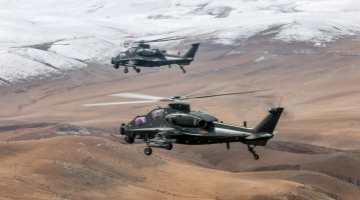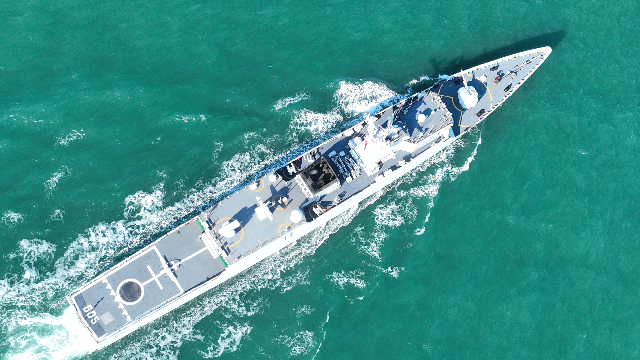By Wang Changfan
News came from the US navy that the US, Australia, Canada, Japan, ROK and India carried out the Sea Dragon 22 multi-national anti-submarine exercise in waters near the Andersen Air Force Base in Guam from January 5 to 15,which drew close attention from the international community.
The Sea Dragon exercise, which is held annually since 2019, involved only the US and Australia at first but was later joined by several other countries including Canada, New Zealand, Japan, ROK and India.
This year’s exercise gathered the main battle equipment from all participants, such as the US Navy’s P-8A, Australia’s P-8A, India’s P-8I, Japan’s P1, ROK’s P-3C, Canada’s CP-140, and other anti-submarine aircraft. Land training, simulated targets tracking and actual submarine tracking training are all included, in which the participating pilots will culminate in over 270 hours of in-flight training, and all countries involved build plans and discuss tactics to coordinate the equipment capabilities, making it be high-end real-combat exercise.
The Sea Dragon 22 exercise, the first multilateral anti-submarine exercise organized by the US this year, represented a fairly high level of air-based anti-submarine performance both in terms of the quantity and quality of participating equipment, as well as the setting of exercise scenarios. The US intended to stage the exercise to impose strategic deterrence on potential rivals in the Asian-Pacific region and further solidify the military cooperation within the US-Japan-India-Australia Quad, while countries like India and ROK also have their own axes to grind.
The US has initiated multilateral anti-submarine exercises in the Asia Pacific for four consecutive years, with intensity and scale continuously escalating in the name of “freedom”. It has hyped up military threats and roiled the regional situation through the Sea Dragon exercise, which it claimed was intended to ensure the freedom of navigation and freedom of commercial activities of the US and its allies in the Asian-Pacific region, but that is just an excuse to cover up its ulterior motives.
First, it wants to showcase the air-based anti-submarine strengths of the US and its allies and partners. America, guarded against threats posed by potential rival’s submarines to the American fleet and naval supremacy, has been studying new anti-submarine technologies and tactics, for which airborne anti-submarine has been the leading force for its high maneuverability, extensive scope and strong deterrence. In recent years, the growing capabilities of potential rival’s submarines have seriously challenged the US Navy’s anti-submarine performance. In view of this new situation, the annual Sea Dragon exercise is a targeted move launched to simulate real-combat scenarios, with the aim to demonstrate to the rivals America’s robust airborne anti-submarine capability and its control over surrounding waters.
Second, it wants to improve the coordination with allies and partners. Advanced as it is, the American anti-submarine aircraft needs support and coordination from the allies and partners due to its own limited quantity and combat radius, but their airborne anti-submarine equipment varies in technical parameters, communication links, and combat procedures. Therefore, to enhance coordination and enlarge the control expanse of the coordinated network of anti-submarine aircraft, the US Navy encouraged the participating countries to work out tactics based on their own equipment on the one hand and emphasized coordination and cooperation on the tactical command level on the other. It also hoped to use the exercise as a training session to train the allies and partners’ pilots flying anti-submarine aircraft.
Third, it wants to increase arms sales overseas. The exercise was not just a stage for show-off, but also a showroom of weapons. India bought an additional six P-8Is after participating in the Sea Dragon 21 exercise; ROK plans to buy eight P-8Ks by 2024 after participating in the exercise many times; Australia and New Zealand are both P-8 buyers. While expanding its own fleet of anti-submarine aircraft, the US always hopes its allies will continue buying more P-8 aircraft in order to cover the entire Asian-Pacific region.









